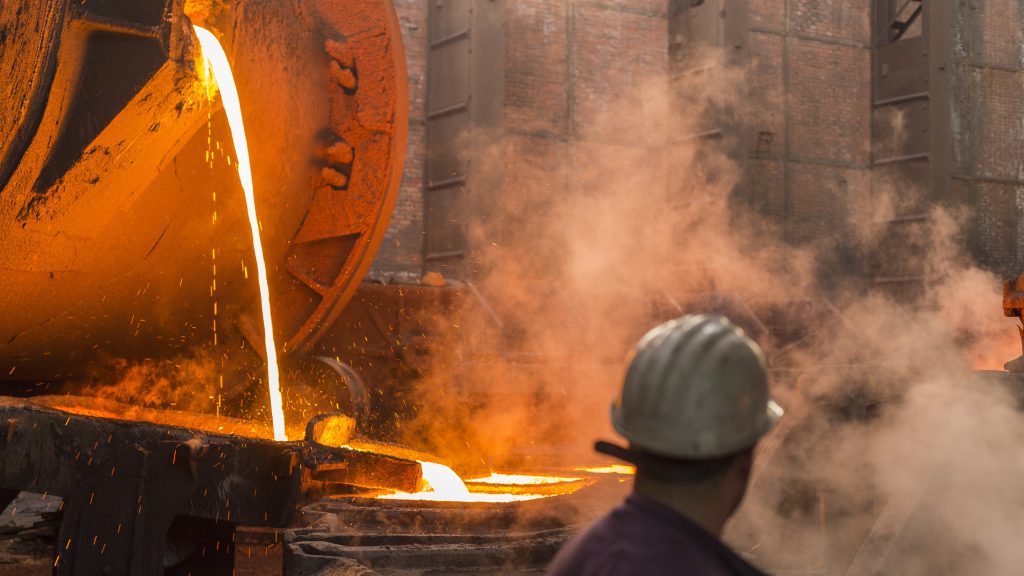
(The opinions expressed here are those of the author, Andy Home, a columnist for Reuters)
London Metal Exchange (LME) copper last week punched up through the $8,000-per tonne level for the first time since February 2013.
LME three-month metal touched a high of $8,238 per tonne on Friday and has retraced to a current $7,900.
The copper price has now almost doubled since its covid-19 low of $4,371 in March last year.
Copper’s ability to withstand a bigger financial sell-off will come down to the resilience of the market’s fundamentals
The subsequent super-charged rally has been a bullish collision of positive short-term fundamentals, particularly China’s unprecedented buying spree, and funds betting on a longer-term, commodities-intensive global recovery.
However, there is a growing sense of unease that high-flying copper may be due a fall.
The immediate concern is the annual index fund rebalancing exercise, which is expected to lead to some heavy selling of the COMEX copper contract.
The broader anxiety is possible contagion from any sharp reversals of fortune in other parts of the financial system.
Copper has been wrapped into a larger reflationary trade which leaves it exposed to broader market turbulence such as a sell-off in global equity markets.
Funds, particularly cross-sector macro funds, are an obvious transmission mechanism.
Fund positioning on both the COMEX and LME copper contracts remains heavily committed on the long side even after what appears to have been some profit-taking into the close of 2020.

Money managers were net long on COMEX to the tune of 80,768 contracts as of Jan. 5, down from 90,434 in the middle of December but still high by any historical yardstick.
Speculative positioning in the London market has followed the same pattern. Investment funds shaved their collective net long from 43,835 contracts in the middle of December to 36,669 in the first week of January.
But the pull-back comes from what was the largest bull commitment since the LME started publishing its report in the current format at the beginning of 2018.
The end-year profit-taking kicked in earlier in the “other financial” category of the LME’s Commitments of Traders Report, a segment that captures flows from parts of the insurance and pension sectors. But here too collective long positioning remained historically high at 34,763 contracts in the first week of the year.

These are backward-looking reports and the subsequent extension of copper’s rally may have triggered more buying by systematic trend-following funds.
Such high levels of fund long positioning raise the question of just how committed investors are to Doctor Copper’s recovery story.
We may not have to wait long to find out.
The first source of potential turbulence is playing out right now as the annual commodity index rebalance takes place between Jan. 8 and 14.
A lot of institutional money tracks the Bloomberg Commodity Index and the S&P GSCI Index, meaning potentially significant changes in positioning to reflect each year’s new target weighting.
Citi analysts expect copper to be one of the most affected commodities this year, simply because of its out-performance in 2020. The bank thinks index re-weighting could generate up to 29,000 contracts of selling on the COMEX copper market. (“Commodity Flows,” Jan. 11, 2020)
That’s based on an assessment there is around $200 billion of assets under management, split evenly across the two indices, although Citi concedes the estimate may be at the high end of the possible spectrum.
The index-related selling may simply be absorbed by fresh buyers, if copper keeps generating positive price signals.
Then again, it might just trigger what many market participants feel would be an overdue correction to copper’s extended nine-month rally.
Even Goldman Sachs, which has proclaimed the dawn of a new commodities super-cycle, concedes broader concerns about financial market stability.
“With the sharp rise in equity valuations, and bond markets showing limited upside from here, investors have expressed concerns around a consolidation pullback in financial markets,” the bank notes. (“Commodity Views: A REV’ed up start to 2021”, Jan. 11, 2020).
The strength of the recent commodities rally has created “pockets of downside risk in the near term” but “commodities have historically been a safe harbour during financial market sell-offs,” according to Goldman.
The bank cites the dotcom bubble burst of March 2000, when commodities went on to rally a further 30% that year before selling off.
The analogy may not be entirely reassuring, given the amount of money currently riding the reflation and recovery trades.
Copper’s ability to withstand a bigger financial sell-off will come down to the resilience of the market’s fundamentals.
Thanks to China’s massive buying, global visible exchange stocks ended last year at 262,900 tonnes, down 39,500 tonnes on the year and the lowest end-month tally since 2014.
Such market optics are unambiguously bullish but the worry is that China’s recovery impulse will fade before that in the rest of the world picks up.
Goldman, unsurprisingly, takes the optimistic view that there will be “an unprecedented synchronised surge in global metals demand into Q2 as China’s peak activity season coincides with the recovery trends along the Western industrial supply chain.”
Others are more cautious, arguing that China’s latest economic stimulus surge may already have peaked.
The jury is very much out but the key takeaway here is that even super-bulls such as Goldman Sachs are now starting to fret about copper’s ability to withstand a broader market correction.
Funds have played a key role in copper’s extraordinary rally to date but they are also the point of maximum potential price weakness going forwards.
(Editing by David Evans)
Comments